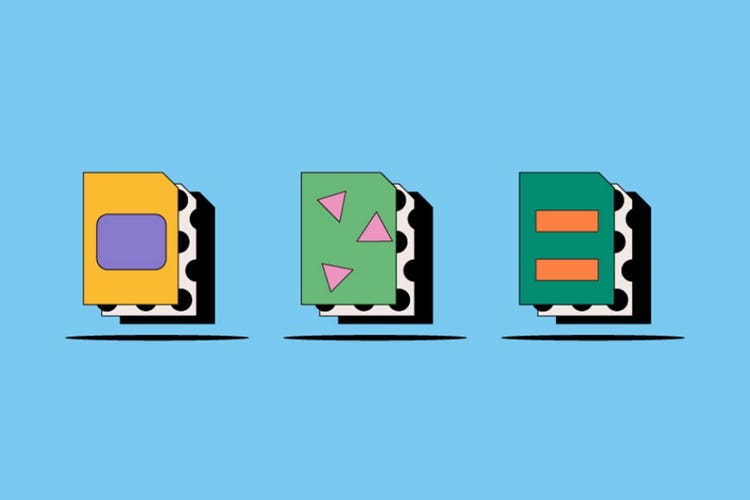You can view AI files on several third-party apps, if they have been saved with the option “Create PDF-compatible file” turned on. You can also save your .AI file in different formats that allow you to open it with different software. For example, saving an AI file as an SVG allows you to embed the file into your website.
Unlike raster artwork made from pixels, vector artwork doesn’t lose resolution when scaled because it’s built on a complex graph-like formula that is infinitely expandable. Because raster images contain a set number of pixels, they can become grainy or “pixelated” when scaled beyond their intended size. Vector images, on the other hand, can scale to any size without any loss in quality. AI files can contain both vector and raster artwork.
Find out more about the differences between raster and vector images.
In order to be opened and edited with other applications, AI files need to be saved with “Create PDF-compatible file” turned on. Without that setting AI files are only fully compatible with Illustrator. Other apps will only be able to open the PDF part, therefore It’s often easier and faster to edit AI files using Illustrator.
You can convert an AI file to a PDF by clicking File > Save As or Export > Export As and selecting PDF. Then, choose the most appropriate PDF Preset in the Save Adobe PDF dialog box. If you want to limit the PDF file size, it helps to turn off the option “Preserve Illustrator editing capabilities”, but then it’s absolutely necessary to keep a copy of the original AI file for full editability.
Package your files, fonts, and images to easily email your AI file. Here’s how:
Select File > Package and a location for your folder. Select Package and attach the folder to an email. Alternatively, you can save your full image as a PDF and send it via email. For full editing capabilities the receiving party will need to have the fonts and images you used. It can make sense to pack AI files as ZIP before sending them via email.
Alternatvely you can use File > Invite to Edit to allow collaborators to edit your file or File > Share for Review to gather comments from clients and colleagues, which will then appear in the Comments panel.



